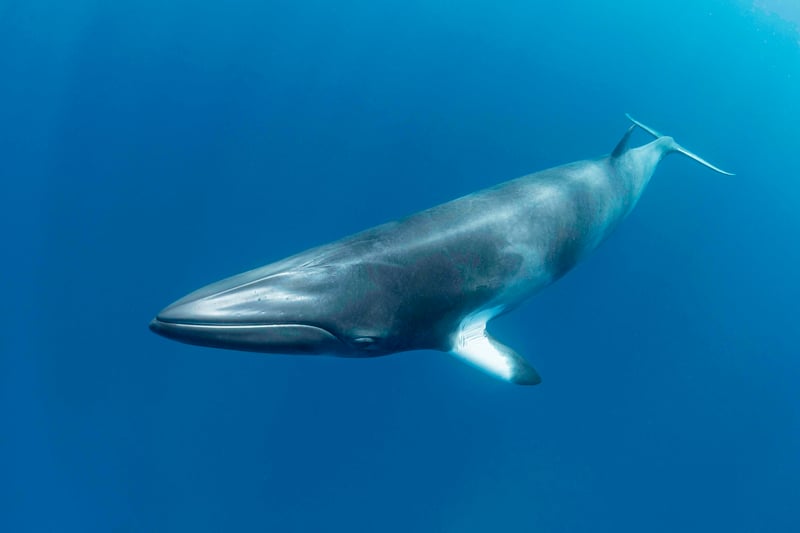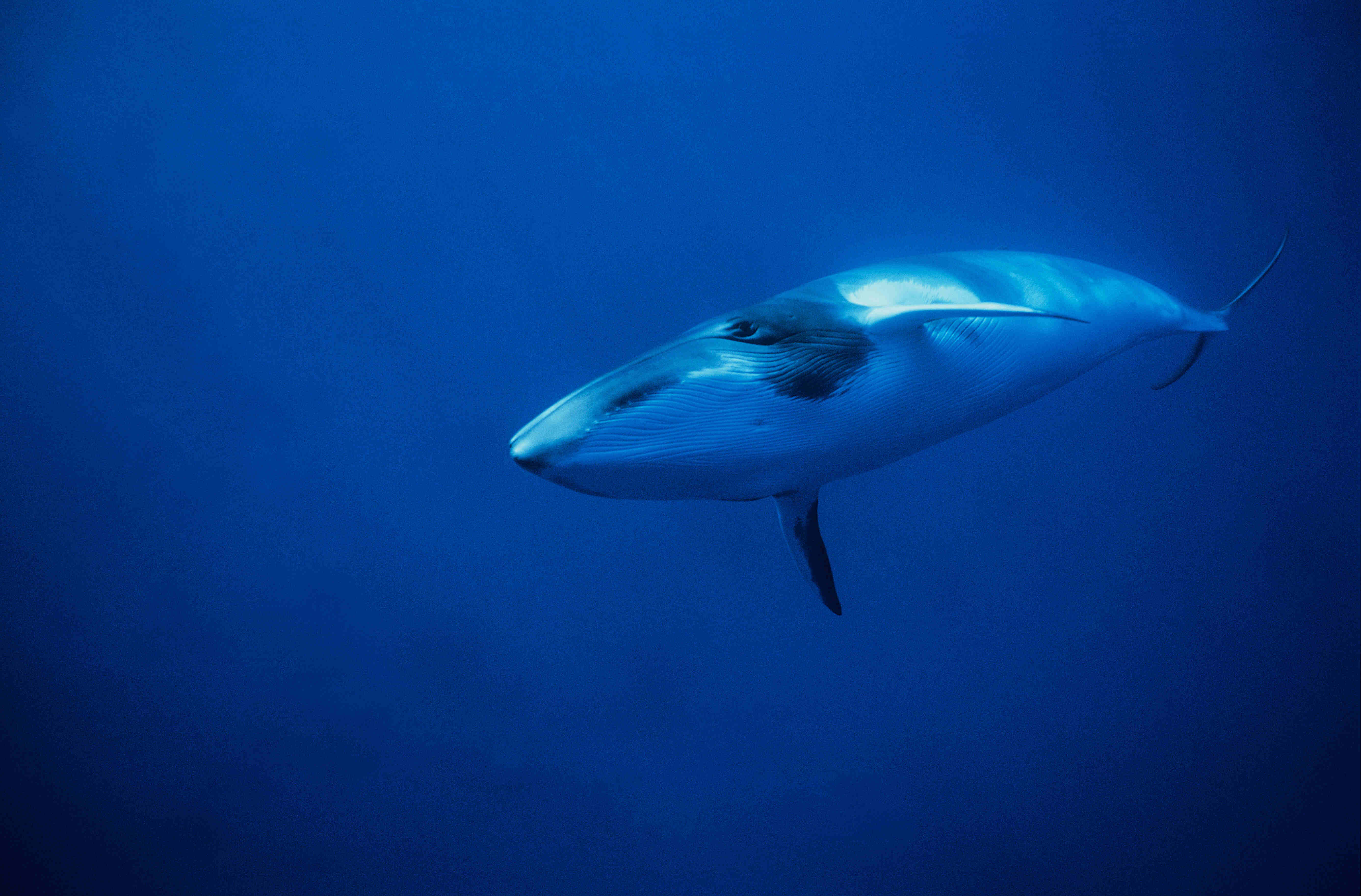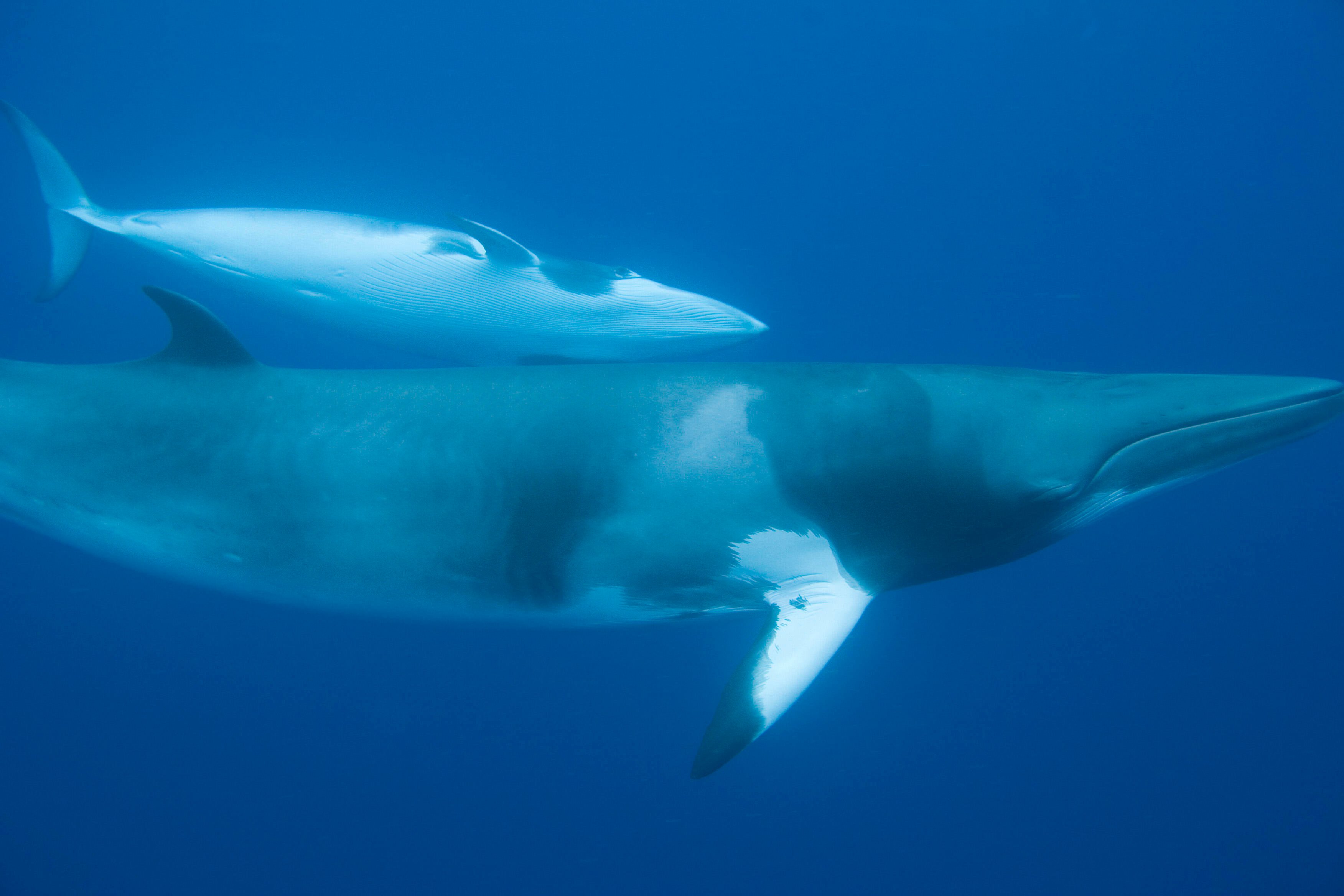
Learn minke whale facts, including their size, diet, habitat, population status, threats, and why protecting these baleen whales is crucial for ocean health.
Minke whales are the second smallest species of baleen whale, but they play an important role in the health of our oceans. Despite their size, they face significant threats from human activity, including whaling, vessel strikes, and entanglement in fishing gear.
What Is a Minke Whale?
If you’re wondering what minke whales are, they’re a species of baleen whale that uses comb-like plates in their mouths to filter small prey from seawater instead of teeth. Minke whales are among the smallest baleen whales and are known for their streamlined bodies, pointed snouts, and fast swimming speeds. They also live up to 50 years!
There are two recognized species of minke whale:
- Common (Northern) minke whale – found in the North Atlantic and North Pacific
- Dwarf minke whales and Scammon's minke whales are both subspecies of this group!
- Antarctic (Southern) minke whale – found in the Southern Hemisphere
How Big Is a Minke Whale?

When it comes to minke whale size, they grow between 23–35 feet (7–10 meters) long and weigh 5–10 tons (approximately 20,000 pounds). That’s roughly the length of a school bus.
Where Do Minke Whales Live?
So, where do minke whales live? They inhabit oceans worldwide.
- Common (Northern) minke whales are found in the North Atlantic and North Pacific.
- Antarctic (Southern) minke whales are found in the Southern Hemisphere, especially near Antarctica.
Minke whales migrate seasonally, feeding in cooler waters during the summer and moving to warmer regions in the winter to breed and give birth.
What Do Minke Whales Eat?
Wondering what do minke whales eat? These whales are filter feeders who eat krill, plankton, and small fish such as herring, capelin, and sardines. They feed by taking in large gulps of water and pushing it out through their baleen plates, trapping their food inside.
By feeding at various depths and locations, minke whales help cycle nutrients throughout the ocean, supporting healthy marine ecosystems.
Are Minke Whales Endangered?
Are minke whales endangered? Currently, minke whales are not listed as endangered globally. The common minke whale is classified as Least Concern by the International Union for Conservation of Nature (IUCN), while the Antarctic minke whale is listed as Near Threatened.
Minke whales are, however, protected under the Marine Mammal Protection Act in the United States. Although, certain regional populations of minke whales face higher risks due to hunting, vessel strikes, entanglement, and climate change.
How Many Minke Whales Are Left?

Estimating minke whale population is challenging, but scientists believe there are at least 180,000–200,000 common minke whales—with some reports being more than 500,000 worldwide—with the Antarctic minke whale listed as “Data Deficient” by the ICUN. These numbers vary due to the difficulty of surveying whales across vast ocean areas.
Threats to Minke Whales
The main threats to minke whales include:
- Commercial whaling—Despite a global ban, some countries—such as Norway—continue to hunt minke whales.
- Vessel strikes–Collisions with boats can cause serious injury or death. A recent incident in New Jersey involved a small boat colliding with a young minke whale, who later died.
- Entanglement–Minke whales can become trapped in fishing gear, restricting movement and causing injury or drowning.
- Pollution–Plastic waste and other pollutants harm whales through ingestion or habitat degradation.
- Noise disturbance–Shipping and industrial activities disrupt whale communication and feeding.
How to Protect Minke Whales
Here’s how you can help protect minke whales:
- Keep at least 150 feet away from whales when boating.
- Support ethical whale-watching companies that follow wildlife-friendly guidelines.
- Reduce or eliminate your fish consumption and withdraw your support from the commercial fishing industry.
- Avoid supporting whaling by not buying whale products or participating in whaling-related tourism.
- Reduce single-use plastics and properly dispose of waste.
- Support organizations working on minke whale conservation and stronger ocean protections.
Why Minke Whales Are Important
Minke whales are an essential part of the marine ecosystem. Protecting them helps maintain ocean health, which benefits countless other species—including humans. By reducing threats like whaling, vessel strikes, and pollution, we can help ensure these whales continue to thrive in the wild for generations to come.
Want to know more about the animals we share this planet with? Check out our Education Center for more animal facts!